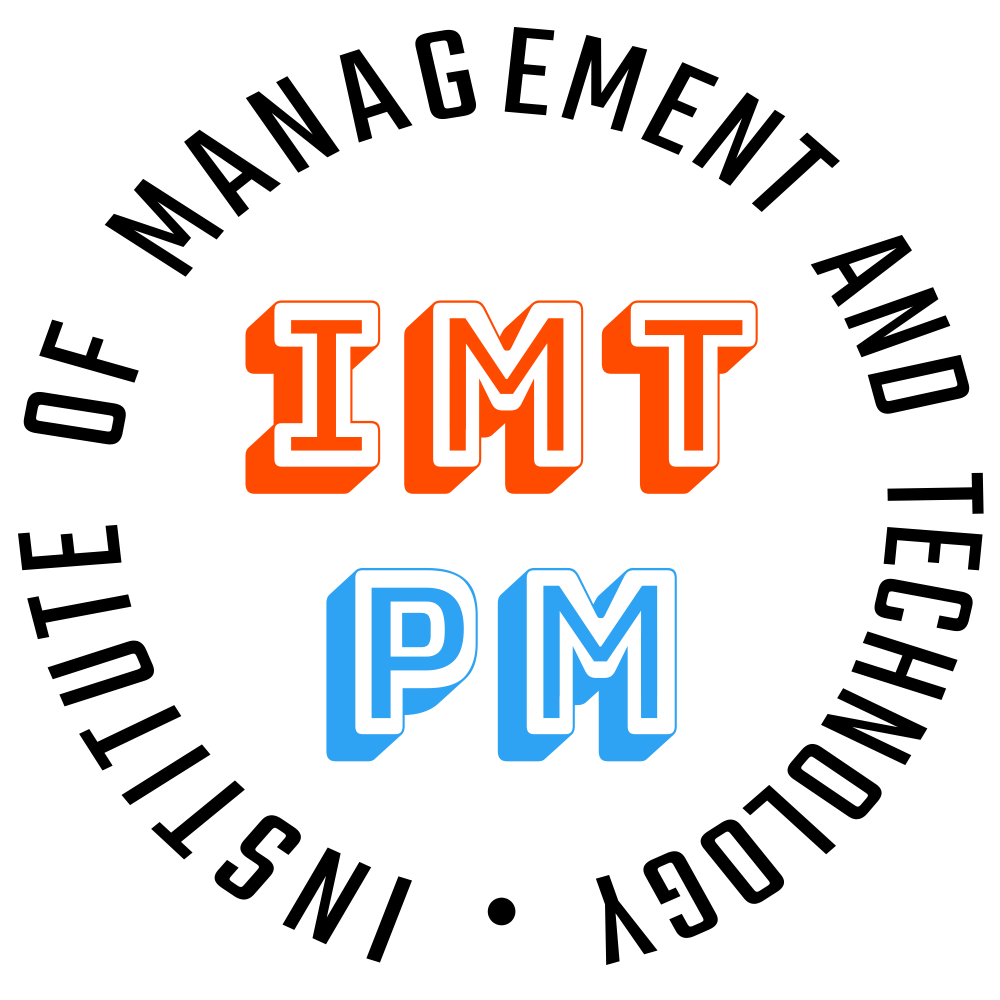1. PMP® Exam Cheat Sheets
At IMT-PM, our enthusiastic team of world-class instructors has created a comprehensive cheat sheet, emphasizing all the necessary concepts and terms you need to review to pass the exam on your first attempt with minimal preparation effort.
2. FREE PMP® Exam Questions – 2025 Updated
This course offers 50 selected practice questions, reflecting the most current format and content for the 2025 PMP® exam. You’ll not only get instant feedback on your answers but also detailed explanations to ensure you fully understand the rationale behind each question.
3. Domain I: People—42%
In the PMP® exam, 42% of the questions, which equals 74 questions, will pertain to the People domain. These questions will focus on the following 14 tasks:
Task 1: Manage conflict
Here are three enablers for the task "Manage Conflict" in the PMP exam:
- Interpret the source and stage of the conflict
- Analyze the context for the conflict
- Evaluate/recommend/reconcile the appropriate conflict resolution solution
Conflict is inevitable in projects, but while we cannot eliminate all conflicts, we can certainly minimize them. How?
- In predictive and hybrid approaches, gaining buy-in from all team members when developing a detailed project management plan is a great way to reduce conflict, as it ensures consensus on project tasks.
- In the Agile approach, the team charter is a valuable document that reflects team buy-in because the team self-develops it with facilitation from the Project Manager or Scrum Master.
- Nowadays, with the increasing use of hybrid approaches in project management, the team charter is not only essential for Agile but also for predictive and hybrid approaches.
Managing conflict is the responsibility of the entire team, not just the project manager. Therefore, the team plays a crucial role in conflict management. The project manager facilitates this process to ensure that conflicts do not negatively impact team performance and morale.
The five approaches to managing conflict are typically categorized as follows:
- Avoiding: Ignoring or suppressing the conflict, hoping it will resolve itself without intervention.
- Accommodating: Yielding to the concerns or demands of the other party, often to maintain harmony or preserve relationships.
- Forcing: Asserting one's own viewpoint or solutions at the expense of others, often using formal authority or power.
- Compromising: Seeking a middle ground where both parties give up something to reach a mutually acceptable solution.
- Collaborating: Working together with the other party to find a mutually beneficial solution that satisfies both sets of concerns.
These approaches are essential knowledge areas for the PMP exam, emphasizing the importance of understanding when and how to apply each approach depending on the project context and stakeholder dynamics.
Exam questions for this task will focus on two key areas: conflict management roles and conflict management approaches.
- For conflict management roles, here is an example exam question
As the project manager of a software development project, you notice increasing tension between two key team members, Sarah and Michael. They have been avoiding each other and communication breakdowns are affecting project progress. You decide to intervene to address this conflict. Which of the following actions should you take first to manage this conflict effectively?
A) Organize a team-building workshop for all project team members.
B) Meet individually with Sarah and Michael to understand their perspectives.
C) Assign a mediator from outside the project team to resolve the conflict.
D) Implement a formal conflict resolution policy for the project.
Answer: B) Meet individually with Sarah and Michael to understand their perspectives.
Explanation: Meeting individually with Sarah and Michael allows the project manager to gather information directly from each party involved in the conflict. Understanding their perspectives, concerns, and the root cause of the tension is crucial before proceeding with any conflict resolution strategy. This approach promotes open communication and demonstrates a proactive effort to address the conflict sensitively and effectively.
Option A is incorrect because organizing a team-building workshop may not directly address the specific conflict between Sarah and Michael and could be premature without understanding the underlying issues.
Option C is incorrect because assigning an external mediator may not be necessary at this stage and might escalate the conflict rather than resolve it internally.
Option D is incorrect because implementing a formal conflict resolution policy is important but should follow understanding the specifics of this conflict situation.
Therefore, option B is the most appropriate initial step for the project manager to manage the conflict between Sarah and Michael.
- For conflict management approaches, here is an example exam question
During a daily stand-up meeting, two team members, Alex and Kim, have a heated disagreement regarding the technical approach for an upcoming sprint task. Alex insists on using a new technology stack for efficiency, while Kim advocates sticking to the existing stack for stability. As the project manager, what should you do first to manage this conflict?
A) Facilitate a brainstorming session to explore the pros and cons of each approach.
B) Separate Alex and Kim for the remainder of the meeting to prevent further escalation.
C) Directly decide on the technical approach that will be used for the sprint task.
D) Encourage Alex and Kim to meet after the stand-up to discuss their viewpoints in detail.
Answer: A) Facilitate a brainstorming session to explore the pros and cons of each approach.
Explanation: In Agile environments, it's essential to foster collaboration and shared decision-making among team members. Facilitating a brainstorming session allows Alex and Kim to present their arguments, consider different perspectives, and weigh the advantages and disadvantages of each technical approach. This approach promotes understanding and consensus building, which are key principles in Agile conflict resolution.
Option B is incorrect because separating Alex and Kim may temporarily diffuse tension but does not address the underlying conflict or promote resolution.
Option C is incorrect because directly deciding on the technical approach without involving the team undermines Agile principles of self-organization and collaboration.
Option D is incorrect because delaying the discussion until after the stand-up may prolong conflict and hinder productivity during the sprint.
Therefore, option A is the most appropriate initial step for the project manager to manage the conflict between Alex and Kim during the daily stand-up meeting.
Task 2: Lead a team
- Set a clear vision and mission
- Support diversity and inclusion (e.g., behavior types, thought process)
- Value servant leadership (e.g., relate the tenets of servant leadership to the team)
- Determine an appropriate leadership style (e.g., directive, collaborative)
- Inspire, motivate, and influence team members/stakeholders (e.g., team contract, social contract, reward system)
- Analyze team members and stakeholders’ influence
- Distinguish various options to lead various team members and stakeholders
Task 3: Support team performance
- Appraise team member performance against key performance indicators
- Support and recognize team member growth and development
- Determine appropriate feedback approach
- Verify performance improvements
Task 4: Empower team members and stakeholders
- Organize around team strengths
- Support team task accountability
- Evaluate demonstration of task accountability
- Determine and bestow level(s) of decision-making authority
Task 5: Ensure team members/stakeholders are adequately trained
- Determine required competencies and elements of training
- Determine training options based on training needs
- Allocate resources for training
- Measure training outcomes
Task 6: Build a team
- Appraise stakeholder skills
- Deduce project resource requirements
- Continuously assess and refresh team skills to meet project needs
- Maintain team and knowledge transfer
Task 7: Address and remove impediments, obstacles, and blockers for the team
- Determine critical impediments, obstacles, and blockers for the team
- Prioritize critical impediments, obstacles, and blockers for the team
- Use network to implement solutions to remove impediments, obstacles, and blockers for the team
- Re-assess continually to ensure impediments, obstacles, and blockers for the team are being addressed
Task 8: Negotiate project agreements
- Analyze the bounds of the negotiations for agreement
- Assess priorities and determine ultimate objective(s)
- Verify objective(s) of the project agreement is met
- Participate in agreement negotiations
- Determine a negotiation strategy
Task 9: Collaborate with stakeholders
- Evaluate engagement needs for stakeholders
- Optimize alignment between stakeholder needs, expectations, and project objectives
- Build trust and influence stakeholders to accomplish project objectives
Task 10: Build shared understanding
- Break down situation to identify the root cause of a misunderstanding
- Survey all necessary parties to reach consensus
- Support outcome of parties' agreement
- Investigate potential misunderstandings
Task 11: Engage and support virtual teams
- Examine virtual team member needs (e.g., environment, geography, culture, global, etc.)
- Investigate alternatives (e.g., communication tools, colocation) for virtual team member engagement
- Implement options for virtual team member engagement
- Continually evaluate effectiveness of virtual team member engagement
Task 12: Define team ground rules
- Communicate organizational principles with team and external stakeholders
- Establish an environment that fosters adherence to the ground rules
- Manage and rectify ground rule violations
Task 13: Mentor relevant stakeholders
- Allocate the time to mentoring
- Recognize and act on mentoring opportunities
Task 14: Promote team performance through the application of emotional intelligence
- Assess behavior through the use of personality indicators
- Analyze personality indicators and adjust to the emotional needs of key project Stakeholders
4. Domain II: Process—50%
In the PMP® exam, 50% of the questions, which equals 90 questions, will pertain to the Process domain. These questions will focus on the following 17 tasks:
Task 1: Execute project with the urgency required to deliver business value
- Assess opportunities to deliver value incrementally
- Examine the business value throughout the project
- Support the team to subdivide project tasks as necessary to find the minimum viable product
Task 2: Manage communications
- Analyze communication needs of all stakeholders
- Determine communication methods, channels, frequency, and level of detail for all stakeholders
- Communicate project information and updates effectively
- Confirm communication is understood and feedback is received
Task 3: Assess and manage risks
- Determine risk management options
- Iteratively assess and prioritize risks
Task 4: Engage stakeholders
- Analyze stakeholders (e.g., power interest grid, influence, impact)
- Categorize stakeholders
- Engage stakeholders by category
- Develop, execute, and validate a strategy for stakeholder engagement
Task 5: Plan and manage budget and resources
- Estimate budgetary needs based on the scope of the project and lessons learned from past projects
- Anticipate future budget challenges
- Monitor budget variations and work with governance process to adjust as necessary
- Plan and manage resources
Task 6: Plan and manage schedule
- Estimate project tasks (milestones, dependencies, story points)
- Utilize benchmarks and historical data
- Prepare schedule based on methodology
- Measure ongoing progress based on methodology
- Modify schedule, as needed, based on methodology
- Coordinate with other projects and other operations
Task 7: Plan and manage quality of products/deliverables
- Determine quality standard required for project deliverables
- Recommend options for improvement based on quality gaps
- Continually survey project deliverable quality
Task 8: Plan and manage scope
- Determine and prioritize requirements
- Break down scope (e.g.,WBS, backlog)
- Monitor and validate scope
Task 9: Integrate project planning activities
- Consolidate the project/phase plans
- Assess consolidated project plans for dependencies, gaps, and continued business value
- Analyze the data collected
- Collect and analyze data to make informed project decisions
- Determine critical information requirements
Task 10: Manage project changes
- Anticipate and embrace the need for change (e.g., follow change management practices)
- Determine strategy to handle change
- Execute change management strategy according to the methodology
- Determine a change response to move the project forward
Task 11: Plan and manage procurement
- Define resource requirements and needs
- Communicate resource requirements
- Manage suppliers/contracts
- Plan and manage procurement strategy
- Develop a delivery solution
Task 12: Manage project artifacts
- Determine the requirements (what, when, where, who, etc.) for managing the project artifacts
- Validate that the project information is kept up to date (i.e., version control) and accessible to all stakeholders
- Continually assess the effectiveness of the management of the project artifacts
Task 13: Determine appropriate project methodology/methods and practices
- Assess project needs, complexity, and magnitude
- Recommend project execution strategy (e.g., contracting, finance)
- Recommend a project methodology/approach (i.e., predictive, agile, hybrid)
- Use iterative, incremental practices throughout the project life cycle (e.g., lessons learned, stakeholder engagement, risk)
Task 14: Establish project governance structure
- Determine appropriate governance for a project (e.g., replicate organizational governance)
- Define escalation paths and thresholds
Task 15: Manage project issues
- Recognize when a risk becomes an issue
- Attack the issue with the optimal action to achieve project success
- Collaborate with relevant stakeholders on the approach to resolve the issues
Task 16: Ensure knowledge transfer for project continuity
- Discuss project responsibilities within team
- Outline expectations for working environment
- Confirm approach for knowledge transfers
Task 17: Plan and manage project/phase closure or transitions
- Determine criteria to successfully close the project or phase
- Validate readiness for transition (e.g., to operations team or next phase)
- Conclude activities to close out project or phase (e.g., final lessons learned, retrospective, procurement, financials, resources)
5. Domain III: Business Environment—8%
In the PMP® exam, 8% of the questions, which equals 14 questions, will pertain to the Business Enviroment domain. These questions will focus on the following 4 tasks:
Task 1: Plan and manage project compliance
- Confirm project compliance requirements (e.g., security, health and safety, regulatory compliance)
- Classify compliance categories
- Determine potential threats to compliance
- Use methods to support compliance
- Analyze the consequences of noncompliance
- Determine necessary approach and action to address compliance needs (e.g., risk, legal)
- Measure the extent to which the project is in compliance
Task 2: Evaluate and deliver project benefits and value
- Investigate that benefits are identified
- Document agreement on ownership for ongoing benefit realization
- Verify measurement system is in place to track benefits
- Evaluate delivery options to demonstrate value
- Appraise stakeholders of value gain progress
Task 3: Evaluate and address external business environment changes for impact on scope
- Survey changes to external business environment (e.g., regulations, technology, geopolitical, market)
- Assess and prioritize impact on project scope/backlog based on changes in external business environment
- Recommend options for scope/backlog changes (e.g., schedule, cost changes)
- Continually review external business environment for impacts on project scope/backlog
Task 4: Support organizational change
- Assess organizational culture
- Evaluate impact of organizational change to project and determine required actions
- Evaluate impact of the project to the organization and determine required actions
6. PMP® Exam Updates
PMP® Exam Content Outline
From January 2021, the PMP® Exam Content changed to focus on 3 performance domains :
- People | Power Skills – 42%
- Process | Ways of Working – 50%
- Business Environment | Business Acumen – 8%
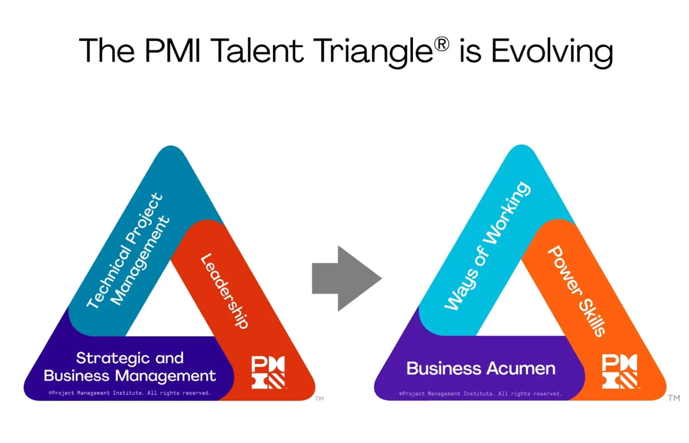
The PMP® exam includes content that spans the value delivery spectrum, including predictive, adaptiveand hybrid approaches to reflect the current trend.

About half of the examination will represent predictive project management approaches and the other half will represent agile or hybrid approaches. Predictive, agile, and hybrid approaches will be found throughout the three domain areas listed above and are not isolated to any particular domain or task. The exact number of items for each question type and approach may vary by form. The scoring model is periodically reviewed by scoring experts to ensure valid assessment of knowledge and skills.
PMP® Exam Report
With the new exam format introduced in January 2021, PMI® no longer discloses the minimum number of correct answers required to pass. Instead, they assess the performance of test-takers in the People, Process, and Business Environment domains on four levels: Above Target, Target, Below Target, and Need Improvement.
During the exam, you are required to respond to 180 situational questions within a timeframe of 230 minutes. Two breaks of 10 minutes each are permitted. However, you are not permitted to review any questions you have already answered after taking a break. PMI® scores 175 questions, with 5 pilot questions excluded from scoring. Incorrect answers do not incur negative scores.
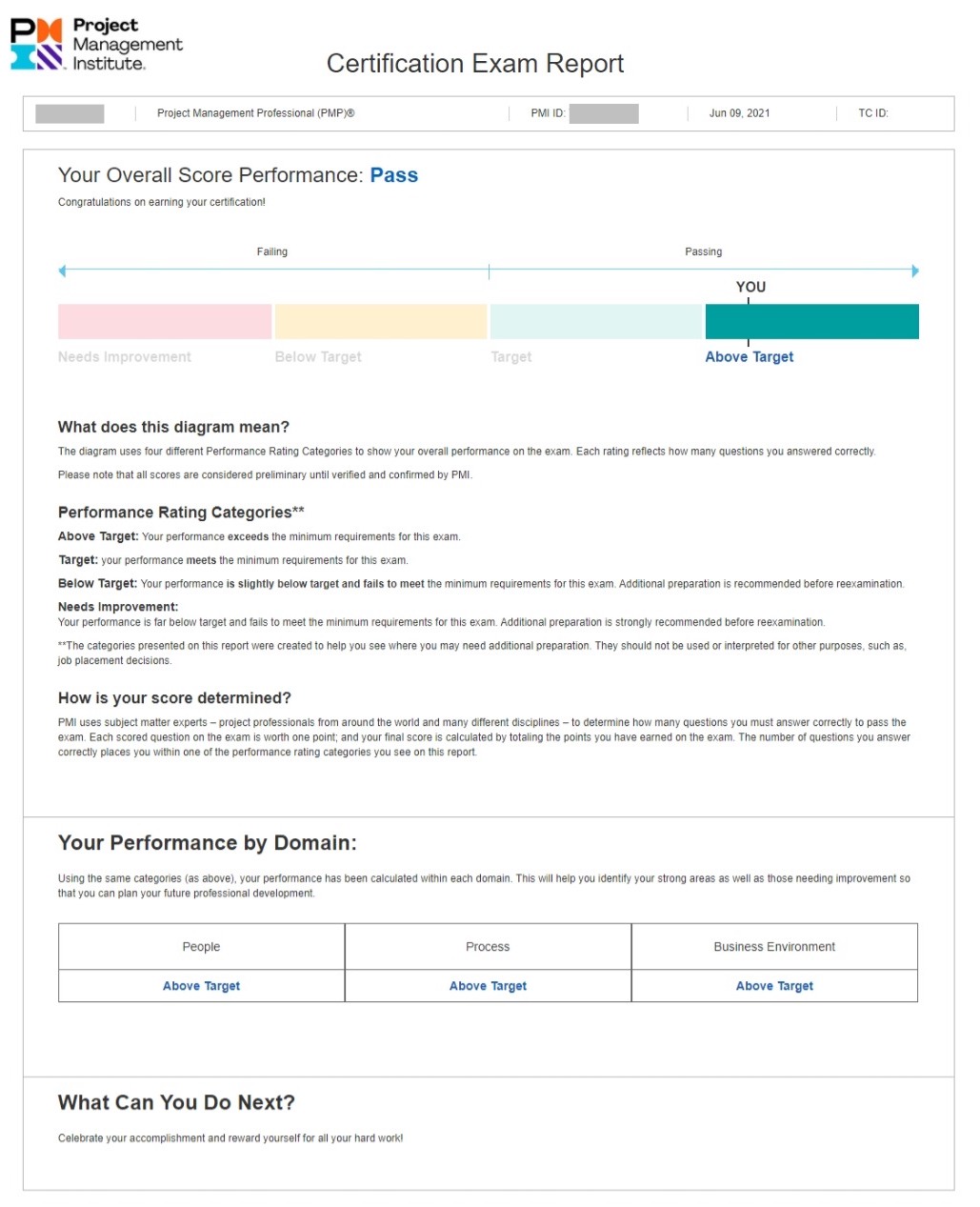
At IMT-PM, relying on feedback from thousands of customers who have successfully passed the PMP® exam on their first attempt over 15 years, reaching a 70% accuracy rate in answering exam questions and mock tests on IMT Study Hall is regarded as a highly secure preparation for proceeding with the exam. You will gain access to IMT Study Hall within one business day after enrolling in the training.
PMP® Exam Question Types
5 types of PMP® exam questions
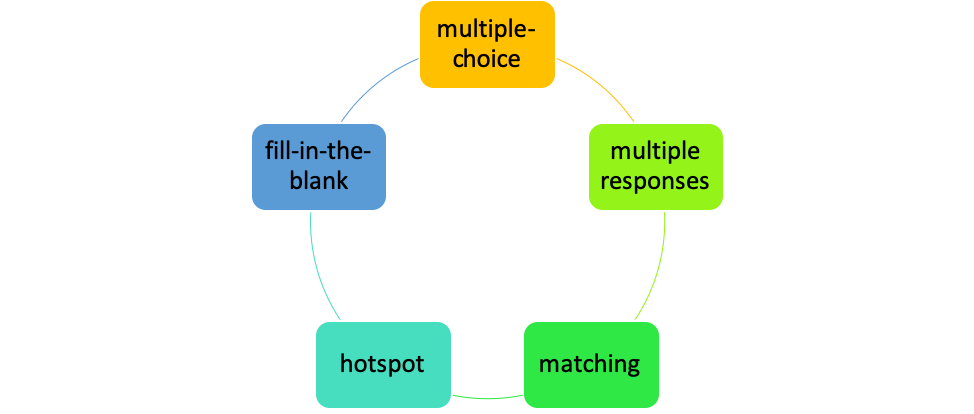
Example of multiple-choice question
At the end of an iteration, Steve who is the project’s graphic designer tells the project manager that a planned task is unfinished because of an issue that appeared days ago but he was unable to resolve. What should the project manager do to prevent this type of situation in the future?A. Discuss the issue during the next iteration planning meeting.
B. Review the issue in the next daily stand-up meeting.
C. Discuss the issue during the retrospective.
D. Address the issue in the demo session.
Example of multiple responses question
Since Jackson is leading his project according to the agile approach, he empowers his team to choose how work needs to get executed. He is a source of help when they want it and he generally stays out of the way until then. This approach worked out great for the whole project in terms of productivity and efficiency. Which are the main aspects of self-organizing teams? (Select two)
A. It gives more freedom to the Agile team
B. It gives more freedom to the project manager
C. It gives team members higher visibility of the product
D. It increases the sense of responsibility of team members
Example of matching question
Match each process in Project Stakeholder Management with its associated Process Group. (Drag the correct process to the yellow destination. Note all process groups will not be used.)
Drag and drop questions: For questions on definitions and process order, the PMP® may include items that leverage a drag and drop question. In this prototype, candidates will drag the process to match up to its respective process group.
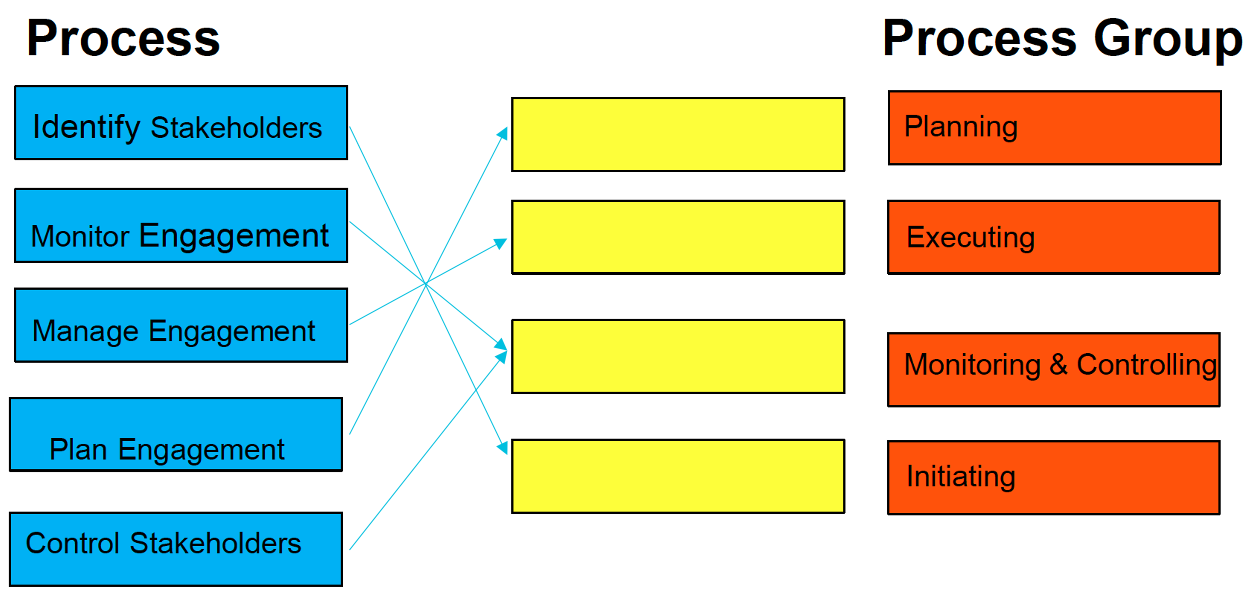
Example of hotspot question (limited)
A project team is using the Stacey Complexity Model to map the degree of uncertainty in the project and select the appropriate project life cycle. As the meeting progresses, it becomes evident that while the requirements are well-known, the team is unfamiliar with the technology required to implement them. As a result, the team selects an adaptive project life cycle.
Where on the Stacey Complexity Model did the team most likely map the project?
Candidates will be asked to interact with a digital graphic in the real exam.
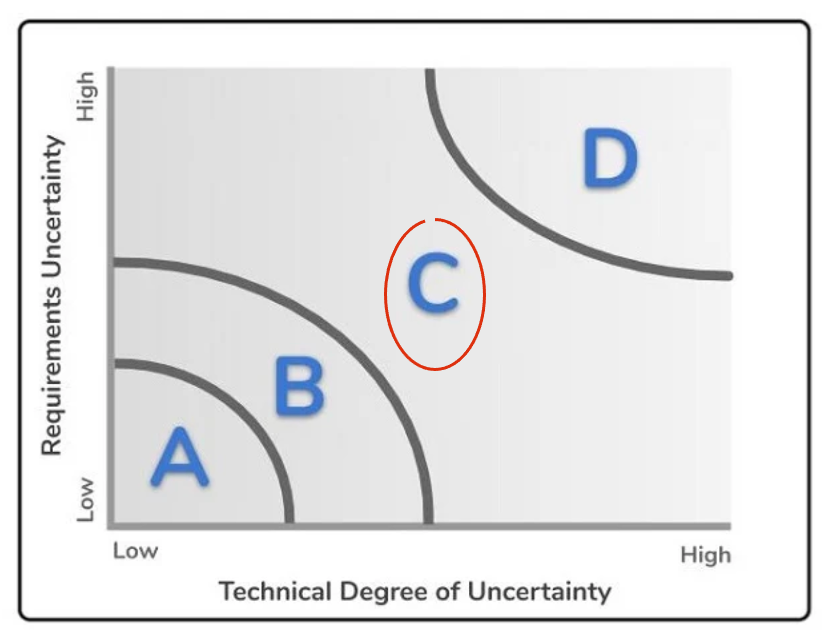
Example of fill-in-the-blank question (limited)
Maalik is the project manager for a construction project. From past experience, he knows that one main risk that he may face is that the sand supplier may not deliver on time. In the risk management plan he creates, he has already accounted for this risk. The action he will take if this were to occur is to procure the sand from a different supplier. But, in this case, there may be differences in the sand quality provided by the first and second supplier, which would then be a ___secondary___ risk.
Fill in the blank with the correct term or concept in risk management.
